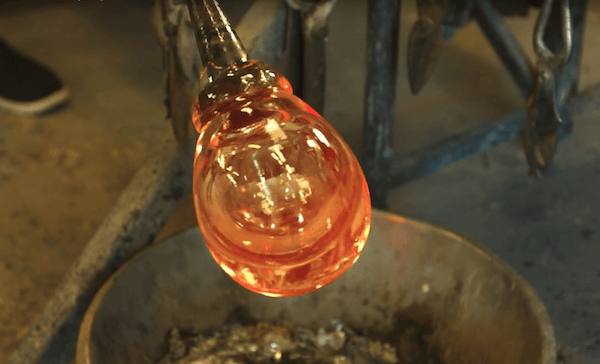
[Image above] Credit: FEVE; YouTube
We owe a lot to the Egyptians for the glass we use today.
Many of the things we use every day are made of glass. What would we drink our beverages out of if it weren’t for glass? How would we know what we looked like if mirrors didn’t exist? How could we drive our cars without windshields? And most of us would probably be walking around in a blur if we didn’t have eyeglasses (although some lenses are now made of plastic rather than glass).
Yeah, glass is pretty important.
Its history goes all the way back to around 3500 B.C., when archaeologists believe that glass beads were accidentally produced by faience. The historian Pliny suggested that shipwrecked Phoenician sailors accidentally created hardened glass overnight from fires they made for their cooking pots on blocks of soda on the beach. However, the Corning Museum of Glass disputes this idea due to the fact that melting glass requires a higher temperature than a beach cooking fire can achieve.

Credit: FEVE; YouTube
Instructions for glassmaking were written on clay tablets more than 3,300 years ago, according to an article from the Corning Museum of Glass. Some evidence finds that the first glass was originally made in northern Syria, Mesopotamia, or Egypt.
Regardless of the place of origin, glass continued to evolve with the Industrial Revolution, when unskilled workers, many of them 20 years of age or younger, worked in glass factories.
Glass has hit many more milestones in its evolution, according to this timeline. The material is used in many industries, including construction, medicine, the arts, automotive, and electronics. The introduction of Gorilla Glass could be a significant advancement in the automotive industry, and it will be exciting to see what the future holds for this versatile material.
For all those diverse industries, glass enables unique functionalities that other materials cannot offer. But even today, manufacturing glass comes with unique challenges as well—which is why there’s a conference entirely focused on addressing the technical challenges of glass manufacturing. If you’re a glass manufacturer or supplier, be sure not to miss the 78th Conference on Glass Problems—the largest glass manufacturing conference in North America—Nov. 6–9, 2017, in Columbus, Ohio.

Credit: FEVE; YouTube
The European Container Glass Federation (FEVE) is celebrating its 40th anniversary this year and has created a video to celebrate glass and its contribution to society.
Watch FEVE’s video below to learn more about glass’s impact on our world.
And if you’re interested in what researchers are doing with glass today, head over to ACerS Glass and Optical Materials Division page, where you can access five free articles (through September 30) published in the International Journal of Applied Glass Science and the Journal of the American Ceramic Society.

Credit: FEVE; YouTube
Author
Faye Oney
CTT Categories
- Glass


